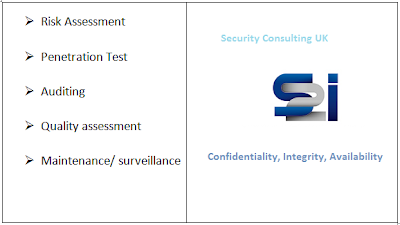Network security is becoming crucial part of IT security and it is playing a major role in reducing vulnerabilities of a system and helping companies to increase their potential. Here are some very important moves that are taken during network security assessment.
Security Policy Document
The important part of security assessment policy is that it must be documented well and one of the important parts is considered as security policy document for every organization. The security policy document describes almost every policy which is implemented in an enterprise network. It describes the duties of an employee and what they can do with the resources. The policy document also includes non-employees such as consultants, clients, business partners and even terminated employees. Moreover, these security policies are defined for internet e-mail and virus detection. It also covers complete cyclical processes to further assess the security system.
Perimeter Security
The second phase of this assessment is performing perimeter security; it explains a first line of defense that external users must deal with before authenticating to the network. It is a security for traffic whose destination is an external network. There are several components that are used to secure the perimeter of a network. During the process of assessment, all perimeter devices are utilized such as firewalls, TACACS servers, dial servers, external routers, modems and VPN concentrators.
Network Security
Network security assessment, a vital part of security assessment in which all of the servers and legacy host security are assessed. A security process implemented for authorizing and authenticating internal and external employees. In perimeter security, when a user is authenticated through perimeter security, it is that security that should be dealt with before starting any applications. The network carries traffic between workstations and network applications (while network applications are implemented on a shared server that could be running on different operating systems such as Mainframe MVS or UNIX).
Here are some important features of network that can be distributed as:
- Non-Repudiation /RSA Digital Signatures
- MD5 Route Authentication and integrity
- Authentication along with Digital Certificates
- Confidentiality holding IPSec/IKE/3DES
- Virus Detection using antiviruses and continuous monitoring of security
Transaction Security
Transaction security works in a dynamic domain of functionality and cover five primary activities to boost network security. These five elements are
- Non-repudiation
- Authentication
- Integrity
- Confidentiality
- Virus detection
Transaction security ensures that session data is protected before being transported across the enterprise communication channel or on the internet. This is important when dealing with the internet channel since data becomes vulnerable to those that would use the important information without permission. E-commerce employs some industry standards such as SSL and SET which describe a set of protocols that provide non-repudiation and CIA (confidentiality, integrity and authentication). Network security must be kept as the top preference because it is the only way to keep the security system healthy and defensible.




